Crushed between the State and the Indian Railways, nearly one-third of the people living in Haldwani along the tracks face an eviction threat — their homes are in danger of being razed, and the future of their schools, banks, and hospitals is in peril
Atiq Shah, 65, stands before the tree that Chirag Ali Shah is said to have meditated beneath, over 139 years ago. The story goes that such was the holiness of the Sufi saint that when people from the villages on the foothills of Kumaon visited, they always found a light glowing above him. The practice of devotees from all religions visiting has not changed, and while there is no light now, the residents of Haldwani, Uttarakhand, swear they still feel his presence.
A view of Dholak Basti adjacent to the Haldwani railway station in Uttarakhand. The cramped settlement houses about 3,000 banjaras, who are primarily ragpickers who handcraft drums during the festive season.
| Photo Credit:
MOORTHY RV
What should have been a laidback winter Sunday in the hills, has turned into a day of stress for Mr. Shah and those residents of Haldwani who live across a 3-km stretch that the Indian Railways claims belongs to it. While the claim is not new — it first submitted this in 2007 — the extent of the land claimed has changed, going from 29 acres to 78 acres in 2017. In December 2022, the High Court of Uttarakhand gave an order that 4,365 families who had ‘encroached’ on railway land needed to be evicted within a week.

Atiq Shah, 65, the fourth generation caretaker of the mazar that dates back to 1884, near Haldwani railway station. The shrine has received an eviction notice.
| Photo Credit:
MOORTHY RV
Mr. Shah is the fourth generation caretaker of the mazar that has received the eviction notice. “The shrine dates back to 1884 and the land it’s on extends across 1.43 acres. We have land records from 1937, when the British allotted the land for this purpose,” he says, adding that this is nazul land, implying that it belongs to the State.
He watches, as officials march towards the mazar with survey instruments. The survey has been commissioned by Nainital’s District Magistrate (DM) Dhiraj Singh Garbiyal. The team measures land from the mazar to the railway tracks. In between are houses with narrow lanes cutting through. They have sprung up over about 50 years. Horses, goats, and humans share space, and in community kitchens, large pots of hot chicken curry simmer on wood fires.
Many residents like Mr. Shah say they have land records from the DM’s office to prove that the land has been leased from the State. There is a government school and colleges built on this land, and an Ayushman Bharat Health and Wellness Centre.
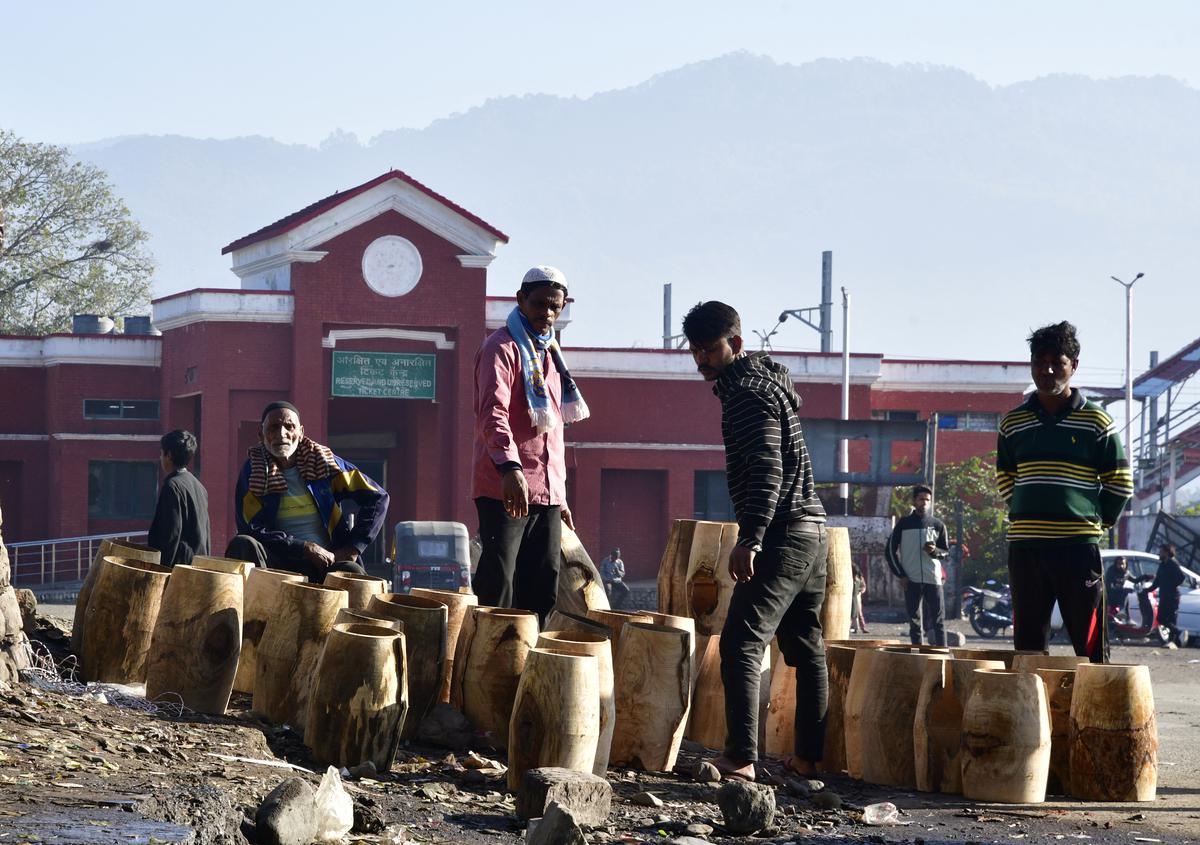
Residents of Dholak Basti handcraft drums near the Haldwani railway station.
| Photo Credit:
MOORTHY RV
Adjoining the mazar is a graveyard with about a 100 graves, developed with a grant of ₹9.1 lakh from the 14th Finance Commission in 2015. A plaque says that it was inaugurated by Haldwani’s current Mayor and BJP leader Jogendra Pal Singh Rautela. “If this property was encroached upon, why would the State fund its development in the first place?” Mr. Shah says.
Similarly, a 700 kilolitre water tank in the lane behind the shrine was inaugurated by the Uttarakhand government in 2008, and bears the name of BJP leader Matbar Singh Kandari, the then Minister.

In December 2022, the High Court of Uttarakhand gave an order that 4,365 families who had ‘encroached’ on railway land needed to be evicted within a week.
| Photo Credit:
MOORTHY RV
The area under dispute has five colonies: Dholak Basti, a cramped settlement of about 3,000 banjaras, primarily ragpickers who handcraft drums during the festive season ; Gafoor Basti with pucca houses and animal sheds; Azad Nagar with slightly more affluent residents; and Lines 17 and 18 of Banbhoolpura and Indira Nagar with broader roads and bigger houses. Mr. Shah lives here. He shows the 1961 certificate of sale, acquired after a public auction of the land that was held by the erstwhile Ministry of Rehabilitation, Government of India.
On December 28, after the High Court ruling, it was in Lines 17 and 18 areas that protests erupted. They saw a few thousand people participate, women and children huddling together, as temperatures plummeted to 2 degrees Celsius.
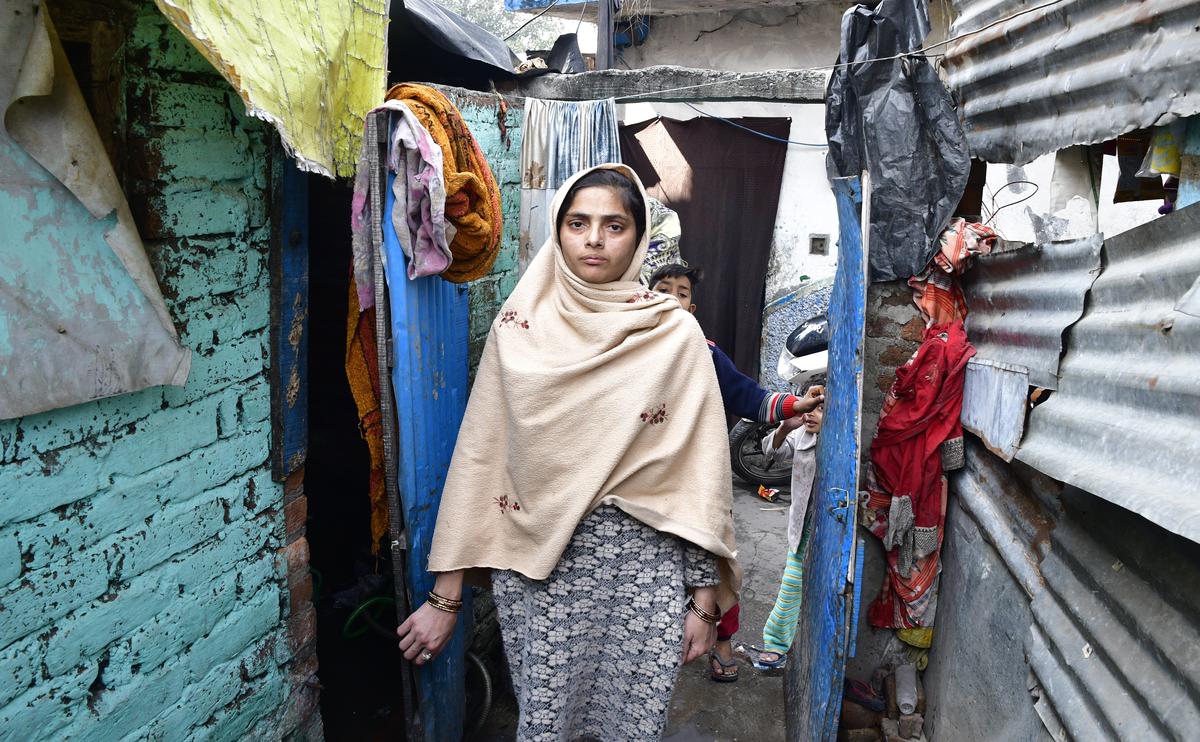
Shaista, 33, stands next to her newly built toilet at her home in Gafoor Basti.
| Photo Credit:
MOORTHY RV
People’s plight
Shaista, 33, watches the surveyors, with Mr. Shah and a few hundred others. She got married and came to Gafoor Basti in 2014, so she wasn’t here when the railways last razed Gafoor Basti and Dholak Basti, but her in-laws still talk about the horror.
“In 2007, when the railways had the chance to barricade the premises, they did not. People returned. Then the electricity poles came. A water pipeline reached us. Roads arrived. The bills started pouring in. The railways should have objected to all the services the municipality began providing us, then,” says Shaista.

Children at a State-run primary school in Banbhoolpura area of Haldwani in Uttarakhand.
| Photo Credit:
MOORTHY RV
She has waited seven years to receive ₹10,000 from the municipal corporation as a reimbursement after she built a puccatoilet in her one-room house. “January was a strange month. It brought both good news and bad. On one hand, I received the money in my bank account; on the other, I fear being evicted,” she says, while pacifying her two-year-old Mayanoor.
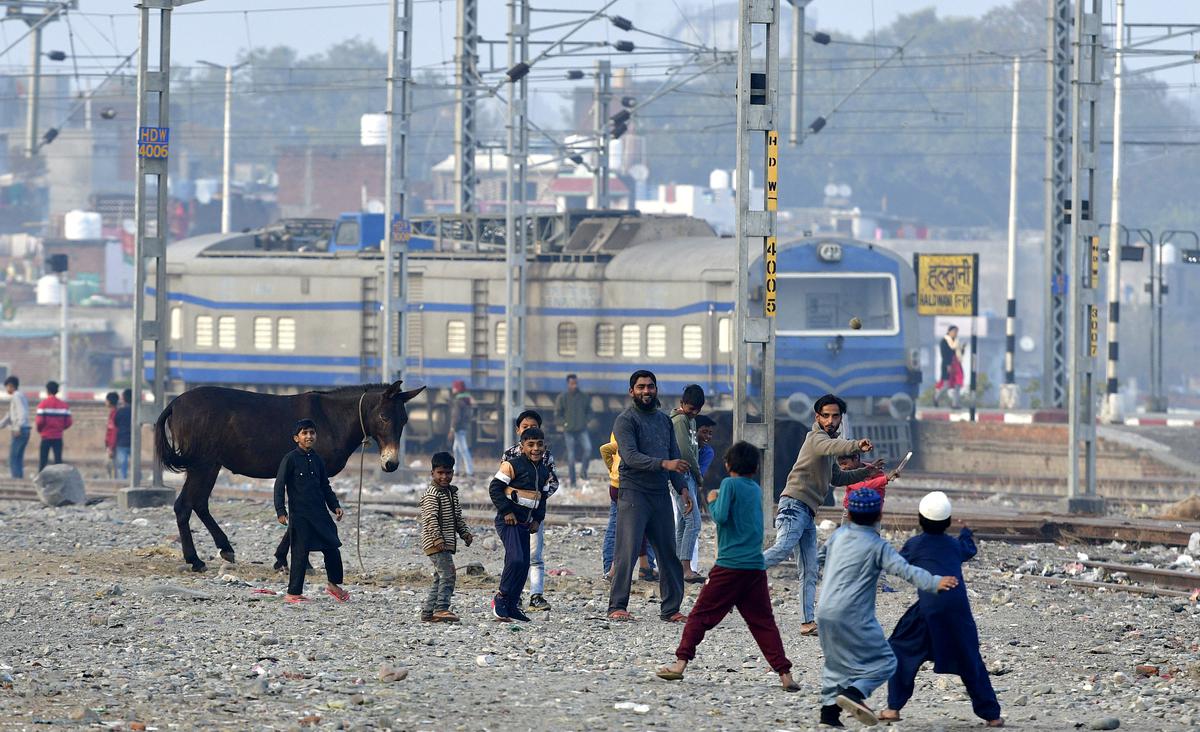
Residents of Dholak and Gafoor bastis playing near the tracks.
| Photo Credit:
MOORTHY RV
Her oldest of three, seven-year-old Jabir, studies in the first grade at the State-run primary school, a few blocks away. The school was founded in 1944, and shares a wall with the water tank that serves the area.
The Rajkiya Poorva Madhyamik Vidyalaya, where 275 children between six and 11 years study, has also received a notice of eviction. “Up to 235 of these children are from affected colonies,” says the school’s principal, Kavita Pant.

Ravi Shankar Joshi, who has filed a public interest litigation (PIL) plea in the High Court of Uttarakhand, at his residence in Uttarakhand’s Basantpur.
| Photo Credit:
MOORTHY RV
Nature’s wrath
At the DM’s office, Sub Divisional Magistrate Manish Singh is leading the latest demarcation and survey exercise in Haldwani. To show his team how this will happen, Mr. Singh neatly lays out land records of the Revenue Department for the area on the long conference table. He explains that earlier demarcation exercises to ascertain the share of railway and State land were carried out by the DM’s office in 1913 and 1959.
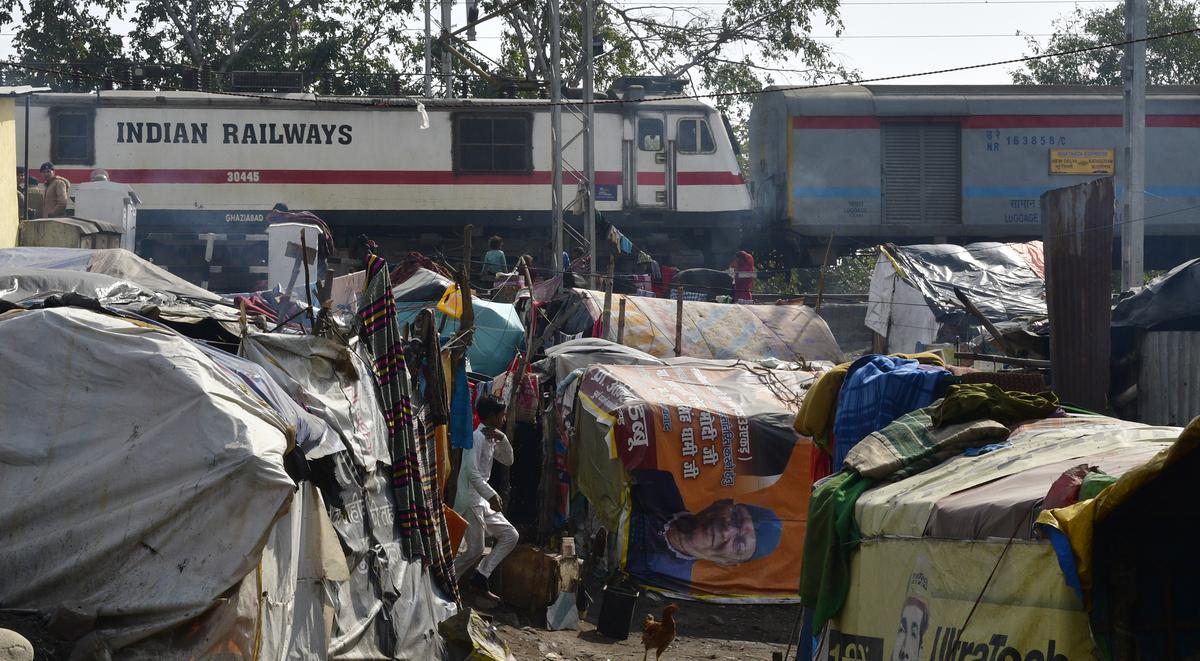
A train passes near a settlement near Haldwani railway station.
| Photo Credit:
MOORTHY RV
“On comparing the earlier two maps, we discovered that the position of the rail tracks had shifted towards the populated area in the 1959 map,” he explains. This took place because the river Gaula in the area gets flooded during the monsoon. “The railway authorities may have been forced to construct the rail track closer to the populated areas.” The DM’s office will investigate this in a bid to establish the exact quantum of encroachment.

The Sub Divisional Magistrate is leading the latest demarcation and survey exercise in Haldwani.
| Photo Credit:
MOORTHY RV
An employee in the DM’s office remembers the year 2008, when a bridge across the Gaula connecting Haldwani and the towns that lie beyond, broke in half just past midnight. In 2013, Ravi Shankar Joshi filed a public interest litigation (PIL) plea in the High Court of Uttarakhand urging an investigation to pinpoint reasons for the bridge’s collapse. Technical reports submitted by a court-appointed committee stated that one of the reasons was sand mining on the riverbed during the dry season. It was also alleged during the court proceedings that the people residing near the embankment were illegally mining sand and that they were encroachers upon railway land.
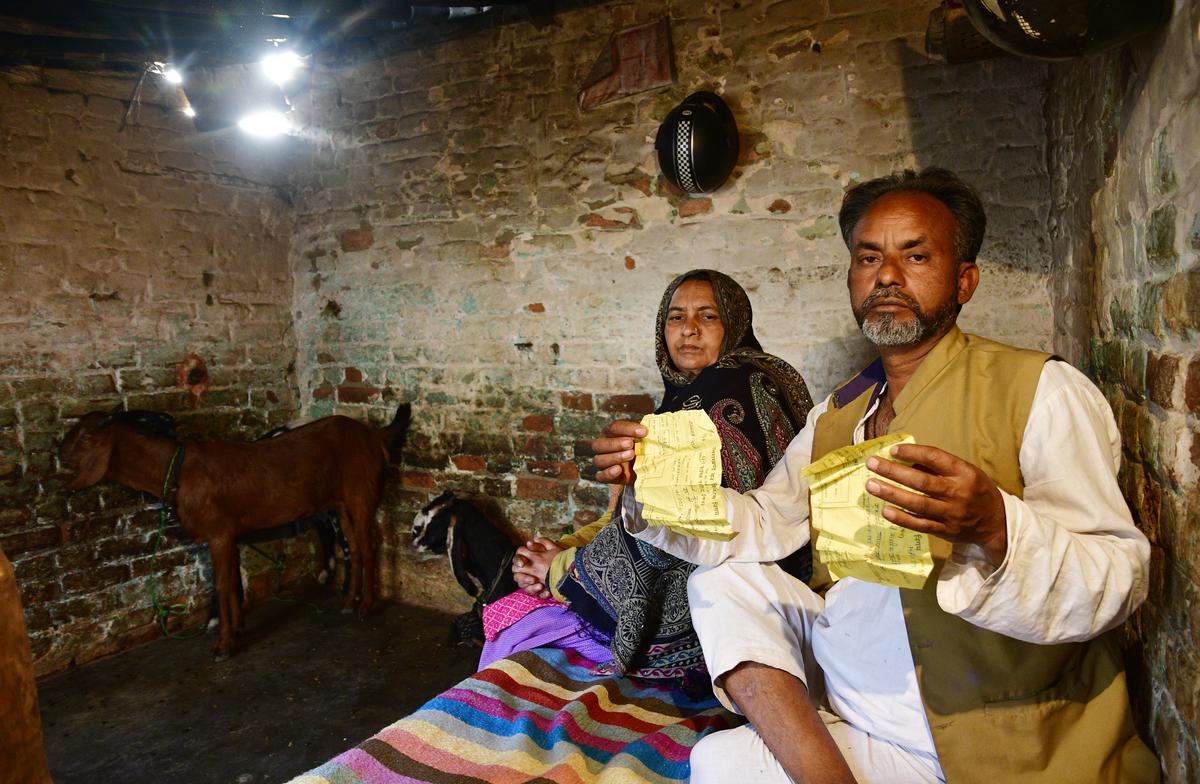
Sajjad Ali, a 60-year-old resident of Gafoor Basti, sits in a small shed along with his wife and seven goats. He also owns a horse, which he uses for sand mining.
| Photo Credit:
MOORTHY RV
Sand mining on the Gaula riverbed has been persistent year-on-year, with hundreds of trucks ferrying tonnes of sand out of the river, says 60-year-old Sajjad Ali, a resident of Gafoor Basti. Mr. Ali who owns a horse, which he uses for sand mining, shows us a yellow receipt issued to him by the Uttarakhand Forest Department, allowing him to mine sand from the riverbed.
Locals like Mr. Ali barely make ₹15-₹20 profit for every quintal of sand they collect. “On every quintal of sand mined, the government collects a royalty of ₹33. We sell it to the contractor for ₹50 per quintal, at a meagre margin,” he says.

A State-run school at Banbhoolpura area of Haldwani in Uttarakhand.
| Photo Credit:
MOORTHY RV
Mr. Ali sits in a small shed along with his wife and seven goats. He points at his one-storey pucca house on the opposite side of the road. “I invested my entire life’s savings in rebuilding the house, which the railways had razed 15 years ago. We stayed on the roads for the next three to four years before rebuilding the house,” he says, of his family of nine.
Mr. Joshi, who had filed the PIL and claims to be an activist, stays in Basantpur, a prosperous picturesque village, nearly 10 km from the Gaula bridge. The State has extended Mr. Joshi ‘informal’ police protection. Two armed policemen are deployed round the clock outside his house after the affected communities threatened to sit in protest around his house.“If the structures are on encroached land, they will have to go. Temples will be razed; mosques will be razed too,” he proclaims, aggressively.
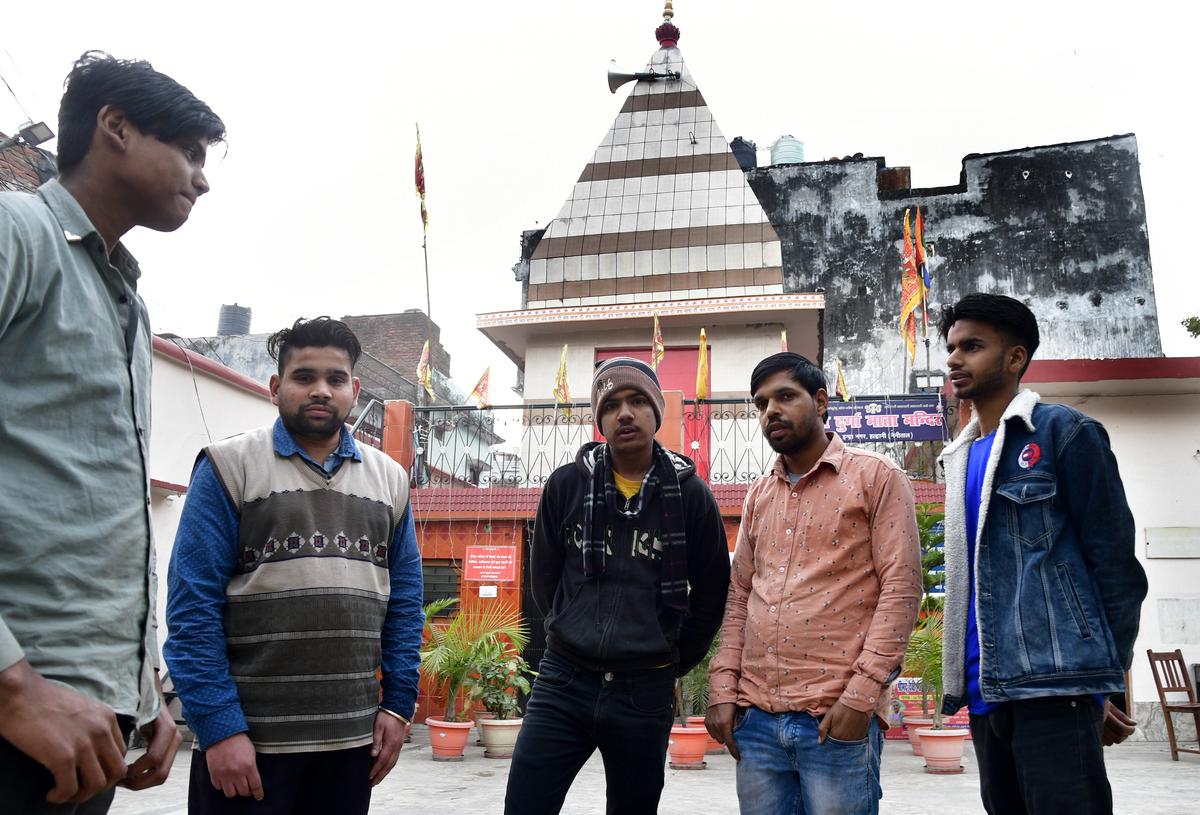
Anurag Gupta, 20, (centre) whose grandfather donated money towards building a Durga temple, close to 50 years ago, says the issue is indeed politically motivated.
| Photo Credit:
MOORTHY RV
The Haldwani Assembly constituency has been a stronghold of the Congress with a substantial minority vote bank. At the helm of the State, however, is the BJP. Mr. Joshi agrees that the issue is more about politics than people. “The town is a large vote bank for the Congress. Affidavits in courts change colour with changing political parties, sometimes in favour of the people, sometimes against them,” he says.

Residents of Dholak and Gafoor bastis near the track of the Haldwani railway station in Uttarakhand.
| Photo Credit:
MOORTHY RV
Some sections of the media have given it a communal colour, since a majority of the population is Muslim, with nearly 300 Hindu families. However, the residents of Haldwani disagree.
Anurag Gupta, 20, whose grandfather donated money towards building a Durga temple, close to 50 years ago, says the issue is indeed politically motivated. “Hindus and Muslims have been residing here side by side in peace. We celebrate Holi, Diwali, and Eid with equal fervour,” says Mr. Gupta. He points to the State-run junior college which has also received a notice of eviction. “I have studied here along with my Muslim friends. I took Sanskrit as a second language, while they learnt Urdu. For us this college is a symbol of unity,” he says.
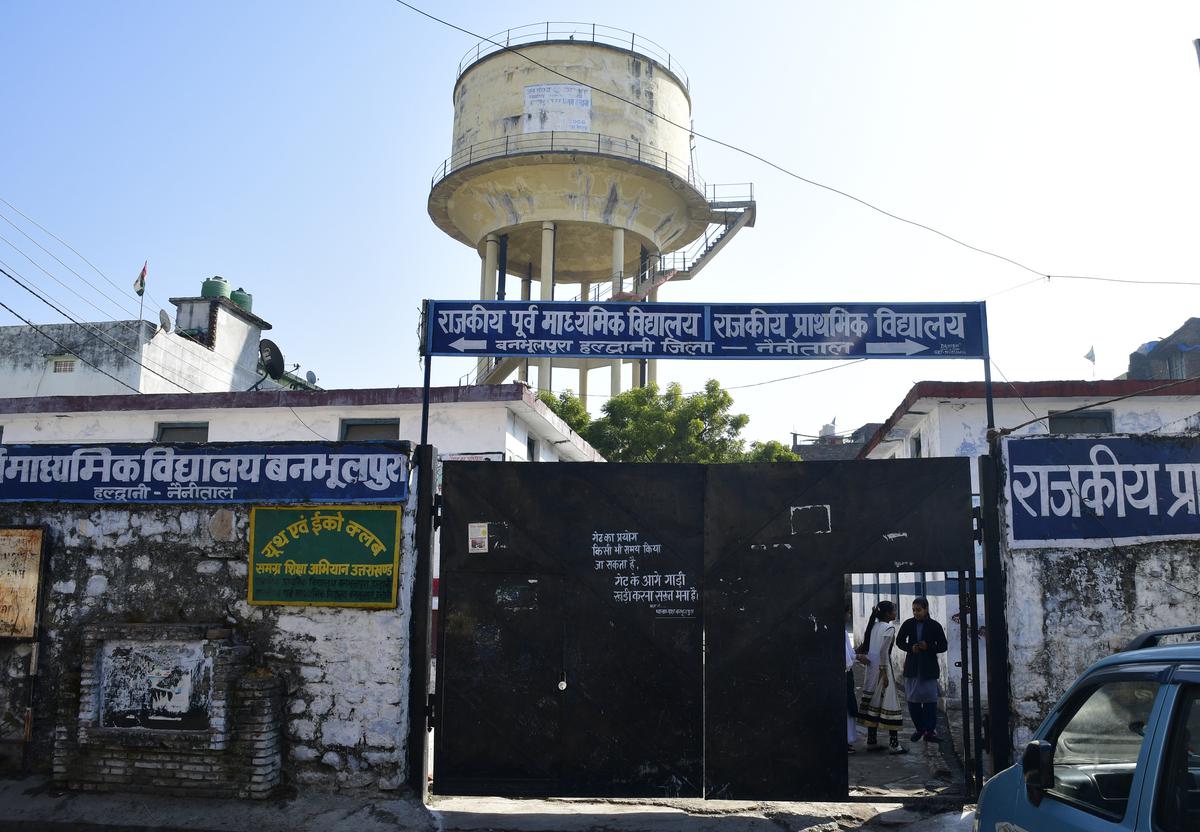
A 700 kilolitre water tank in the lane behind the shrine inaugurated by the Uttarakhand government in 2008, and bears the name of BJP leader Matbar Singh Kandari, the then Minister.
| Photo Credit:
MOORTHY RV
In readiness
Meanwhile, the DM’s office is getting ready for the February 7 Supreme Court hearing. “We are in the process of asking all the affected families to submit their land papers. We will compare these with our revenue land records and submit an affidavit before the SC hearing. We hope to solve this issue peacefully; we don’t want an adverse law and order situation,” Mr. Garbhiyal says . In fact, the Supreme Court in itsorder on January 5, 2023, has called for a gentle solution.

The survey has been commissioned by Nainital’s District Magistrate Dhiraj Singh Garbiyal. The team measures land from the occupied land to the railway tracks.
| Photo Credit:
MOORTHY RV
A kilometre from the DM’s office, back at the school, 10-year-old Zaina’s light green eyes twinkle when asked what profession she’ll pick as an adult. Without thinking twice, she says, “A judge. If I were a judge in the Supreme Court, and the railways asked to break the houses down, I would have refused. I would have said, ‘Where will these little children and the poor go?’”
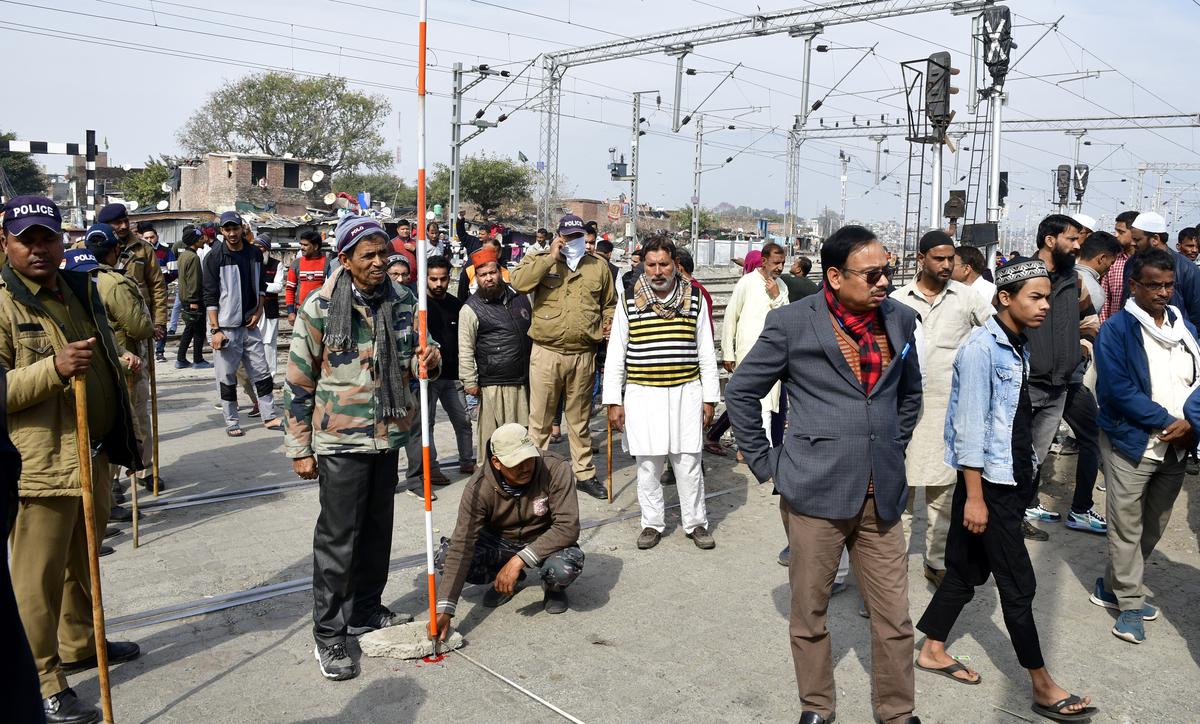
Demarcation exercises are in progress to ascertain the share of railway and State land.
| Photo Credit:
MOORTHY RV


